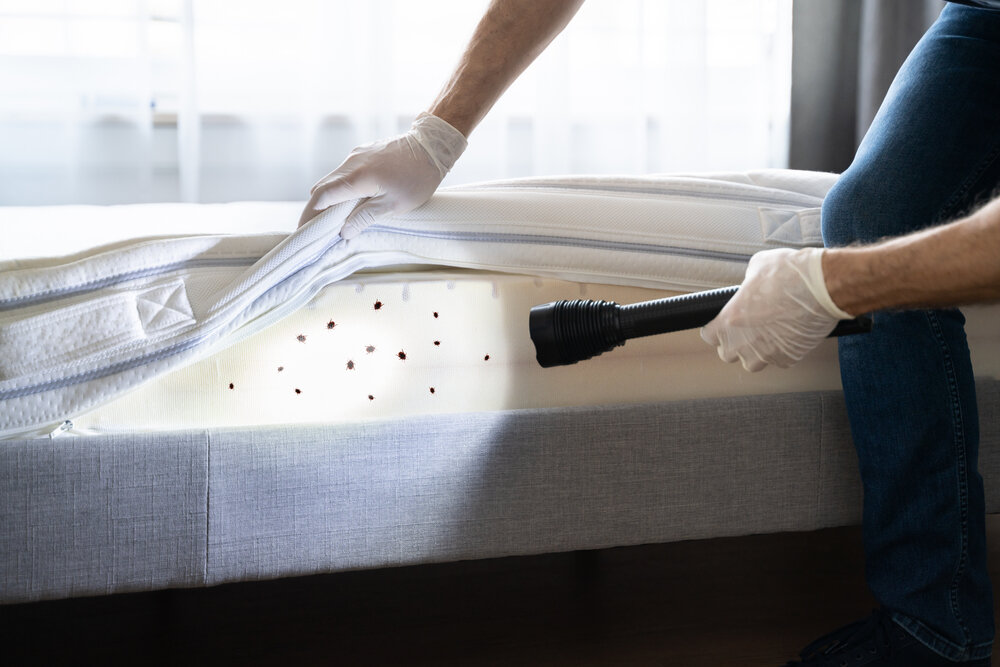Experienced DC Exterminator for Bed Bug Heat Treatment Near Me
Experienced DC Exterminator for Bed Bug Heat Treatment Near Me
Blog Article
Unveiling the Power of Bio-Fungicide Sprays in Targeting Bed Bug Infestations Naturally
In the world of pest control, the persistent and elusive nature of bed pest infestations postures a considerable obstacle for professionals and house owners alike. Conventional techniques frequently involve extreme chemicals that can be detrimental to health and wellness and the setting. A promising option has arised in the kind of bio-fungicide sprays. These all-natural remedies use the power of helpful fungis to combat bed pests efficiently. As we look into the intricacies of their device of activity and the engaging benefits they use, a clearer understanding of their capacity in addressing this typical hassle unravels.
Bio-Fungicide Sprays: A Natural Service
When combating bed pests, bio-fungicide sprays provide a natural service that is significantly obtaining appeal due to their performance and eco-friendly nature. Bio-fungicides are acquired from normally occurring microorganisms such as fungis, germs, and other organic resources. These sprays function by targeting the bed insects' exoskeleton, interrupting their growth and recreation cycle, eventually bring about their death.

In addition, bio-fungicide sprays are less likely to add to pesticide resistance in bed pest populations, as they use various settings of activity that are not quickly adjusted to by these insects - bed bug treatment. This makes them a valuable device in integrated pest monitoring strategies targeted at removing and controlling bed pests in a sustainable fashion
Understanding Bed Bug Problems
What elements contribute to the spread of bed insect infestations in urban environments? Bed insect invasions flourish in urban settings due to several key aspects.
Moreover, the increased flexibility of individuals and the extensive use secondhand furniture and items in metropolitan settings can present bed pests right into new environments, sustaining invasions. Lack of understanding and correct education regarding bed bug prevention and control steps even more intensify the spread of infestations in metropolitan areas. Understanding these aspects is vital for developing reliable techniques to battle and protect against bed insect problems in city settings.
Device of Bio-Fungicide Activity

Furthermore, some bio-fungicides work by harming the fungal cell membrane layer, resulting in leakage of vital mobile components and triggering the cell to collapse. This interruption of the cell membrane layer stability compromises the fungal cell's feasibility and adds to its death. see it here Furthermore, bio-fungicides can cause oxidative stress within the fungal cell, setting off a cascade of dangerous responses that finish in cell death.
Advantages of Using Bio-Fungicides

Another benefit of bio-fungicides is their capacity to battle chemical resistance. Gradually, parasites like bed insects can create resistance to chemical pesticides, making them ineffective. Bio-fungicides offer a different setting of action, making it less most likely for insects to create resistance and guaranteeing lasting efficiency in pest control. Bio-fungicides have very little to no recurring results on the atmosphere, minimizing the threat of unsafe chemicals Click Here sticking around in the environment. Generally, the benefits of making use of bio-fungicides in pest management extend beyond simply managing fungal illness, offering a reliable and lasting option to typical pesticides.
Application Tips for Effective Results
To accomplish ideal outcomes when using bio-fungicide sprays the original source for bed pests, correct application techniques are necessary for effective parasite control. It is important to thoroughly check the plagued areas to determine bed insect hotspots. Target these areas directly with the bio-fungicide spray, concentrating on cracks, gaps, and various other hiding places where bed insects are most likely to dwell. Make certain that the spray reaches these areas properly by utilizing the suitable nozzle establishing on the sprayer for better penetration.
Additionally, it is advised to comply with the maker's guidelines concerning the dilution proportion and application regularity to optimize the bio-fungicide's effectiveness without creating harm to animals or human beings. Uniformity in application is vital to breaking the bed insect life cycle and protecting against reinfestation. Additionally, take into consideration turning various kinds of bio-fungicides to avoid the advancement of resistance in bed pest populations.
Lastly, it is important to preserve tidiness and declutter the dealt with locations to get rid of potential bed bug hiding spots and help with the bio-fungicide's efficiency. Regular monitoring and reapplication, if required, will aid ensure long-lasting success in getting rid of bed pests normally.
Conclusion
To conclude, bio-fungicide sprays use an all-natural service for targeting bed bug invasions. By comprehending the mechanism of bio-fungicide activity and the benefits of utilizing these products, individuals can successfully deal with bed insects without using unsafe chemicals. Following proper application tips can result in effective results in handling bed insect invasions in a safe and environmentally-friendly manner.
In addition, bio-fungicides have actually revealed promising outcomes in properly removing bed pest invasions, giving a viable alternative to standard techniques.
To achieve optimal outcomes when using bio-fungicide sprays for bed bugs, correct application strategies are necessary for effective bug control. In addition, consider rotating various types of bio-fungicides to protect against the development of resistance in bed pest populaces.
In conclusion, bio-fungicide sprays offer a natural remedy for targeting bed insect problems. By comprehending the mechanism of bio-fungicide activity and the benefits of using these items, individuals can efficiently fight bed bugs without the usage of dangerous chemicals.
Report this page